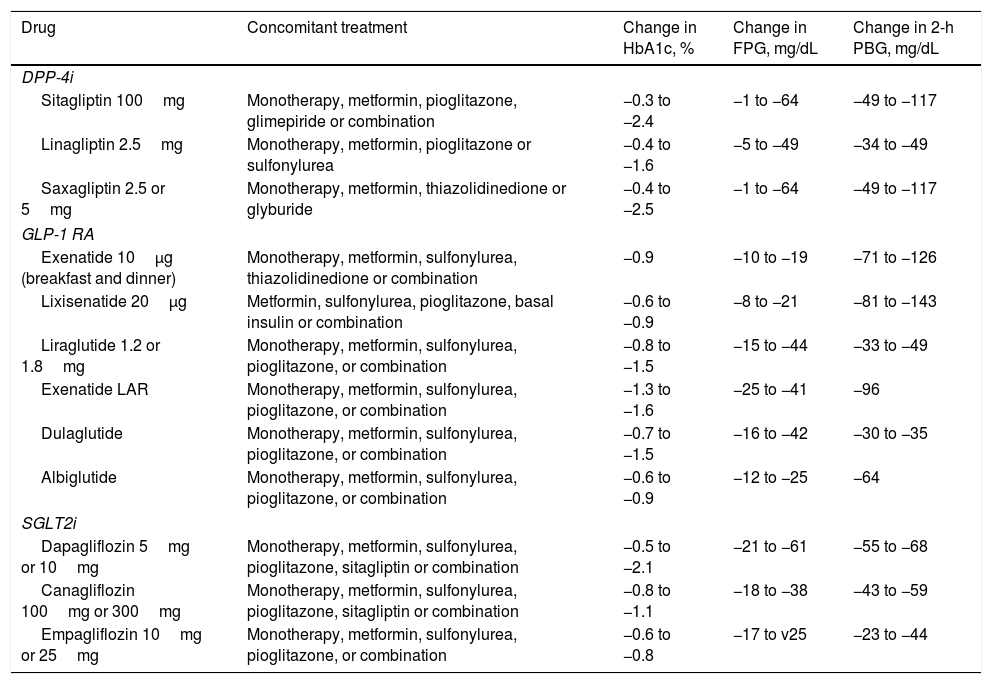To achieve appropriate glycaemic control, postprandial and baseline hyperglycemia should be reduced. Various epidemiological studies have suggested an association between fluctuations in postprandial blood glucose and cardiovascular risk. However, studies of interventions performed to date have not shown that selective control of postprandial hyperglycemia is associated with cardiovascular benefits. Accordingly, an appropriate combination of drugs that control both baseline and postprandial hyperglycemia (individually based on each patient's characteristics) is the best strategy for achieving good glycaemic control. This review seeks to impart to clinicians the concept of postprandial hyperglycemia, analysing its causes, how to measure it, its prevalence, its consequences and, ultimately, the available therapeutic strategies for the preferential control of the postprandial hyperglycemia along with baseline hyperglycemia.
Para alcanzar un control glucémico adecuado, la hiperglucemia posprandial y basal debe reducirse. Diversos estudios epidemiológicos sugieren una asociación de las fluctuaciones de glucemia posprandial con el riesgo cardiovascular. Sin embargo, los estudios de intervención realizados hasta el momento no demuestran que el control selectivo de la hiperglucemia posprandial se asocie con beneficios cardiovasculares. En consecuencia, una adecuada combinación de fármacos, que controlen tanto la hiperglucemia basal como la posprandial, de forma individualizada según las características de cada paciente, es la mejor estrategia para alcanzar un buen control glucémico. Esta revisión pretende acercar a los clínicos el concepto de hiperglucemia posprandial, analizando las causas, cómo puede medirse, su prevalencia, sus consecuencias y, finalmente, qué estrategias terapéuticas existen para el control preferente de la misma junto a la hiperglucemia basal.
Article
Diríjase desde aquí a la web de la >>>FESEMI<<< e inicie sesión mediante el formulario que se encuentra en la barra superior, pulsando sobre el candado.

Una vez autentificado, en la misma web de FESEMI, en el menú superior, elija la opción deseada.

>>>FESEMI<<<











